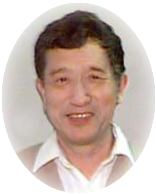

Wednesday - January 6, 2010
SLAC Today is
available online at:
http://today.slac.stanford.edu
In this issue:
People: Juwen Wang
Pulsars Help in Search for Gravitational Waves
Working Toward a World Without Nuclear Weapons: Sidney Drell and George Shultz in Conversation with Philip Taubman
Around SLAC: The Zeppelin
 |
 |
|
Wednesday - January 6, 2010 |
People: Juwen Wang Polished pieces of copper, aluminum and stainless steel rest neatly on a table top in Juwen Wang's office at SLAC, looking like a carefully constructed museum display. Though shiny and crafted, the parts no longer have any real value other than the sentimental weight they carry for Wang. The pieces are all parts of accelerators—some just test versions and others that were once operational. The collection is like a "metal scrapbook" of Wang's career, left over pieces of the numerous machines that Wang has spent thirty years developing. While his work has rippled out to the worldwide accelerator community, Wang's home in the United States has always been at SLAC. This year, his colleague and former graduate advisor Gregory Loew, deputy director emeritus of SLAC, gathered recommendations for Wang and nominated him as a Fellow of the American Physical Society, an honor bestowed to less than one half of one percent of APS members. Wang accepted the fellowship in December. From the APS citation, Wang is awarded the fellowship: For his leadership in designing, building and testing a large variety of disk-loaded accelerator structures for electron-positron linear colliders and his pioneering studies of RF breakdown in these structures. Wang is originally from China, and in the mid 1960s he attended the prestigious Tsinghua University (known as China's equivalent of MIT) in Beijing, where he was able to major in accelerator science. He was a top student. He impressed his teachers, began graduate work early, and was on track for a career in accelerator science by the late 1960's. Read more... Pulsars Help in Search for Gravitational Waves An artist's conception of the Fermi Gamma-ray Space
Telescope. (Image: NASA.)
Radio astronomers have uncovered 17 millisecond pulsars in our galaxy by studying unknown high-energy sources detected by the Fermi Gamma-ray Space Telescope. The astronomers made the discovery in less than three months. Such a jump in the pace of locating these hard-to-find objects holds the promise of using them as a kind of "galactic GPS" to detect gravitational waves passing near Earth. Working Toward a World Without Nuclear Weapons: Sidney Drell and George Shultz in Conversation with Philip TaubmanOn Monday, January 25, Stanford University's Center for International Security and Cooperation will present SLAC Professor Emeritus Sid Drell and former Secretary of State George Schultz in a conversation with CISAC Consulting Professor Philip Taubman, in the 2009-2010 Drell Lecture, "Working Toward a World Without Nuclear Weapons." The talk will take place from 4:00 to 5:30 p.m. in Stanford's Tresidder Memorial Union, Oak Lounge, and is free and open to all. For further details, see the event Web page. Look closely or click for a larger image: The Airship Eureka hovers over the SLAC Linac, a highlight on two of the dirigible's public tours. (Photo
by Lauren Knoche.)
Around SLAC:
|
Events (see all | submit)
Access (see all)Announcements
|
|
| | ||
|
|
||
 <%
Response.AddHeader "Last-modified", getArticleDate()
'Response.AddHeader "Last-modified","Mon, 01 Sep 1997 01:03:33 GMT"
'Monday, December 06, 2010
%>
<%
Response.AddHeader "Last-modified", getArticleDate()
'Response.AddHeader "Last-modified","Mon, 01 Sep 1997 01:03:33 GMT"
'Monday, December 06, 2010
%>View online at http://today.slac.stanford.edu/. |
||